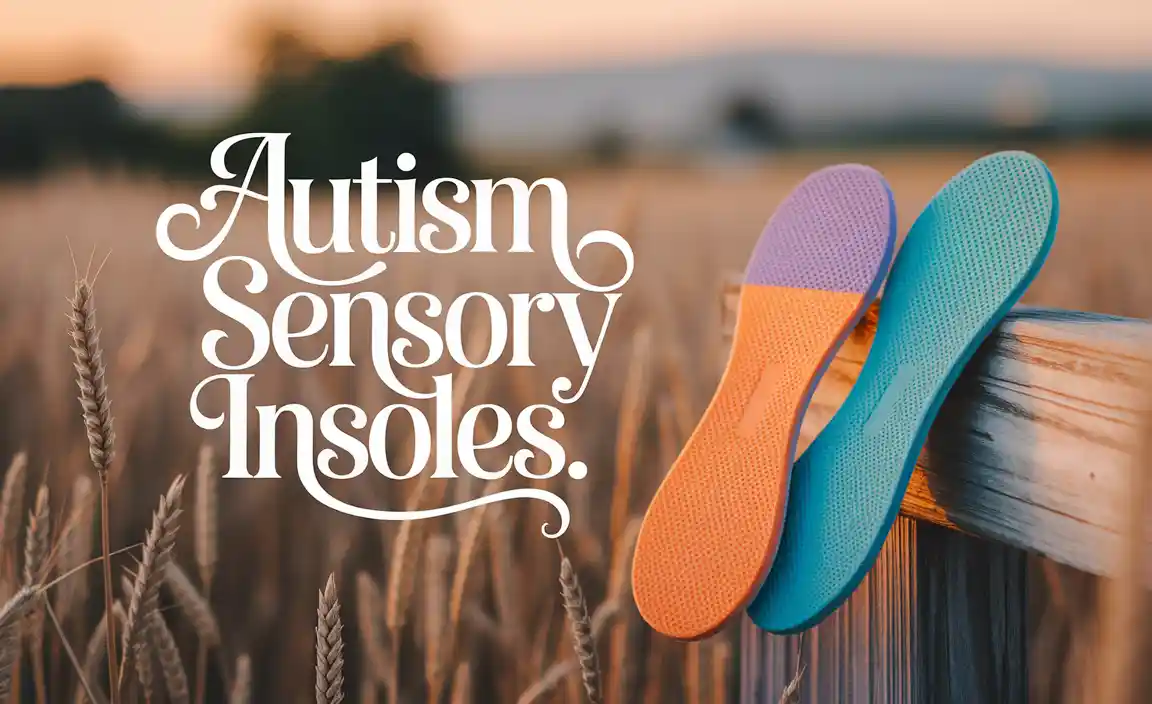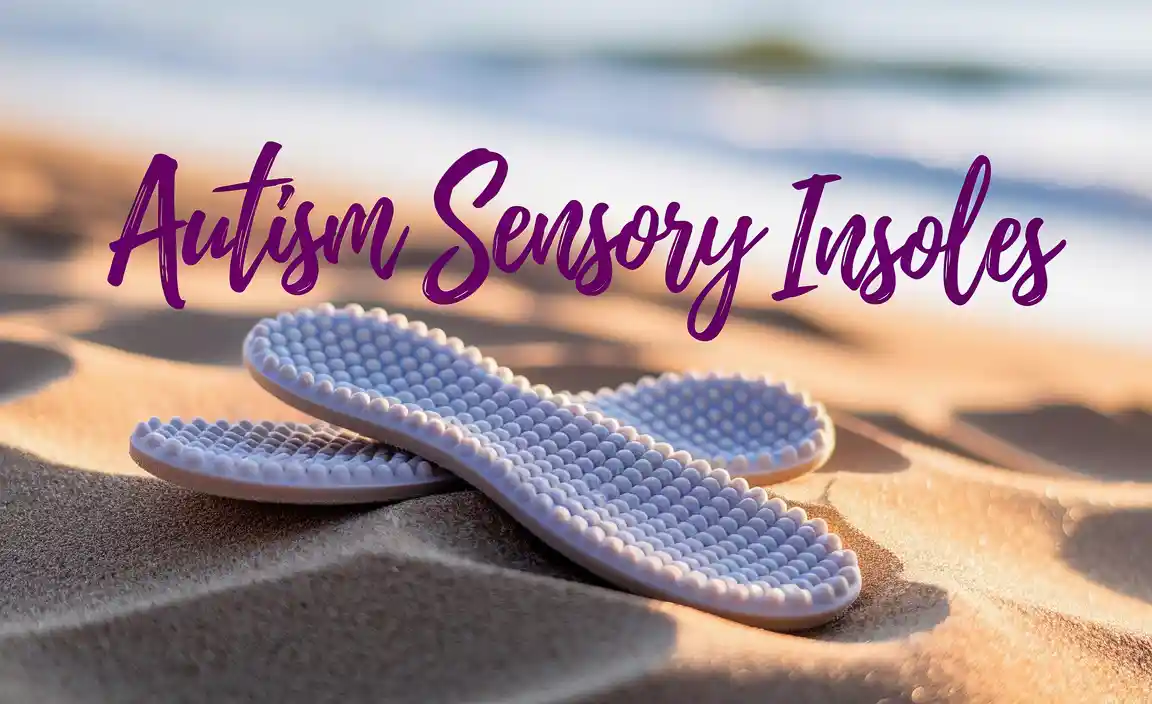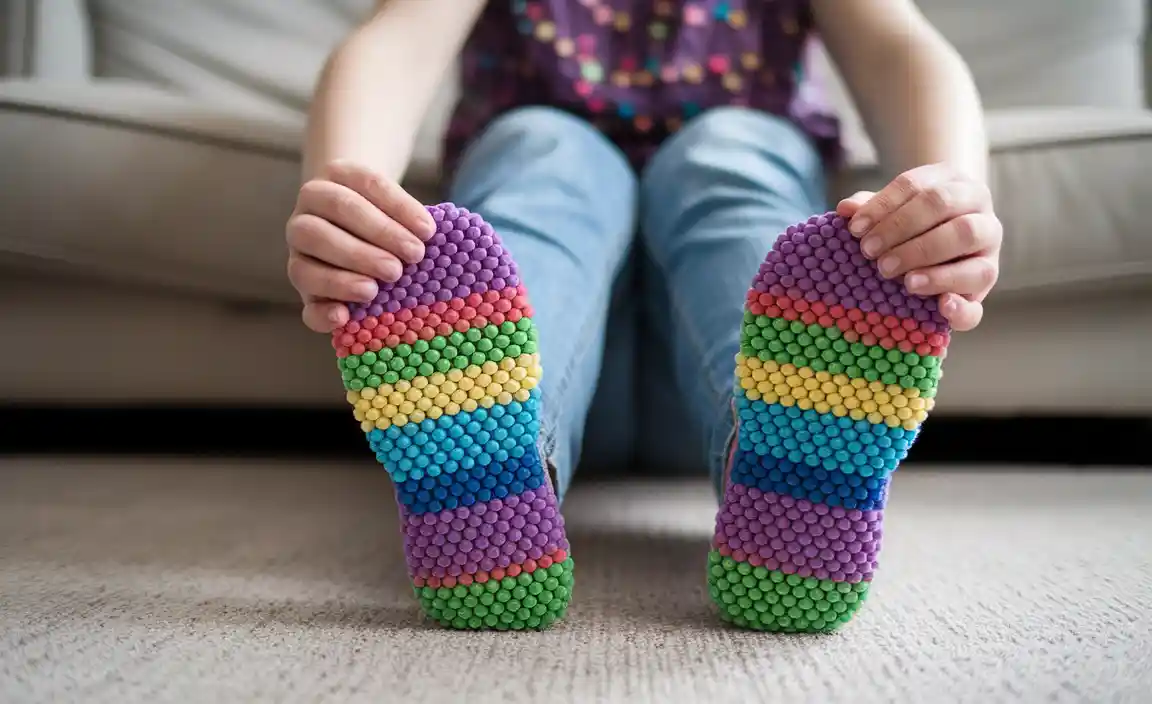Autism Sensory Insoles: Best Comfort for your child and to provide them with the very best comfort. For many individuals with autism, sensory processing differences are a significant aspect of their daily experience. These differences can manifest in various ways, including hypersensitivity or hyposensitivity to tactile input from their feet. This can lead to discomfort, anxiety, and even avoidance of certain textures or sensations, making everyday activities like walking or wearing shoes a challenge. Fortunately, innovative solutions are emerging to address these unique needs, with autism sensory insoles becoming a beacon of hope for enhanced comfort and well-being.
The world often presents a barrage of sensory information that neurotypical individuals can easily filter. However, for those on the autism spectrum, this input can be overwhelming. The soles of the feet are particularly sensitive, acting as a crucial interface between the body and the ground. The pressure points, the texture of the ground, even the slightest seam in a sock or a shoe lining can trigger disproportionate responses. This can range from a mild distraction to intense distress, impacting mobility, participation in activities, and overall mood. Inappropriate footwear or the lack of supportive, comfortable insoles can exacerbate these sensory challenges, making it difficult for children and adults with autism to feel grounded and secure.

Understanding Sensory Needs and Insoles for Autism Sensory Feet
When we talk about insoles for autism sensory feet, we’re referencing specialized footbeds designed to mitigate sensory overload and provide a more regulated sensory experience. These insoles are not merely about cushioning; they are engineered with specific materials, textures, and support structures to cater to the unique sensory profiles of individuals with autism. Some common sensory challenges related to the feet include:

Hypersensitivity: This can involve an extreme reaction to light touch, pressure, or certain textures. A smooth sole might feel too “slippery” or lacking in grounding sensation, while a shoe with a prominent seam could feel like nails on a chalkboard.
Hyposensitivity: Conversely, some individuals may have reduced sensitivity, meaning they don’t register pressure or texture as effectively. This can lead to a feeling of instability and a need for more pronounced sensory input to feel “connected” to the ground.
Proprioceptive Needs: Many individuals with autism benefit from increased awareness of their body’s position in space. Proprioceptive input from the feet can help with this, providing a sense of stability and grounding.
Traditional insoles often prioritize cushioning and arch support for general foot health. While beneficial, they may not adequately address the specific sensory needs of individuals with autism. This is where dedicated autism sensory insoles come into play, offering a tailored approach.
Features of Effective Autism Sensory Insoles

The design of effective autism sensory insoles often incorporates a thoughtful combination of features:
Material Selection: The materials used are paramount. Soft, yet firm, materials that offer a consistent, predictable texture are often preferred. Some insoles might utilize a smooth, uniformly textured surface, while others may incorporate subtle, non-irritating patterns that provide a gentle sensory input. Materials that wick away moisture and prevent overheating are also essential.
Density and Firmness: The right balance of density and firmness is crucial for providing adequate support without feeling “hard” or “prickly.” Some individuals may benefit from a firmer insole that offers more proprioceptive feedback and a sense of solid grounding, while others might prefer a slightly softer yet supportive feel.
Seamless Design: The absence of irritating seams or rough edges is vital, especially for those who are hypersensitive to tactile stimuli. A smooth, continuous surface minimizes the risk of sensory irritation.
Graduated Support: Some insoles are designed with graduated support, offering slightly more density or texture in key areas like the heel or the ball of the foot to provide targeted sensory input and a sense of stability.
Customization Options: While ready-made options are increasingly available, the ability to customize the insoles based on specific sensory needs can be a game-changer. This could involve variations in material, texture, or even thickness.
Breathability: To maintain comfort throughout the day and prevent irritation from moisture, breathable materials are a key consideration.
Finding the Best Comfort with Autism Sensory Insoles
The journey to finding the best comfort with autism sensory insoles often involves experimentation and careful observation. What works for one individual may not be the perfect fit for another, as sensory profiles are highly individual.

Here are some tips for selecting and using insoles for autism sensory feet:
Consult with Professionals: Podiatrists, occupational therapists, or specialists in autism support can offer invaluable guidance. They can assess your child’s specific sensory needs and recommend types of insoles or materials that might be most beneficial.
Observe and Listen: Pay close attention to your child’s reactions when wearing different types of insoles. Do they seem more relaxed? Are they more willing to wear shoes? Do they express any discomfort? Open communication, even if non-verbal, is key.
Start Gradually: Introduce the insoles slowly. Allow your child to wear them for short periods initially and gradually increase the duration to allow them to adapt to the new sensations.
Consider the Footwear: The type of shoe will also impact comfort. Ensure the shoes themselves are well-fitting, made from soft materials, and have ample space for the insoles without causing undue pressure.
Trial and Error: Don’t be discouraged if the first pair isn’t a perfect match. The market for autism sensory insoles is evolving, and finding the right solution might require trying a few different options.
The investment in high-quality insoles for autism sensory feet is an investment in a child’s or adult’s comfort, confidence, and ability to engage with the world. By understanding the unique sensory landscapes individuals with autism navigate and by seeking out specialized, thoughtfully designed products, we can provide a tangible pathway towards a more comfortable, grounded, and joyful experience. These innovative insoles are more than just accessories; they are tools that can unlock a new level of sensory regulation and empower individuals to walk through life with greater ease and security.
